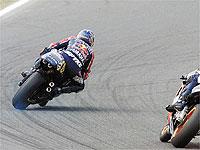Conceptual Art An Exploration of Artistic Ideas
Conceptual art blog is a contemporary artistic movement that seeks to challenge traditional notions of aesthetics and visual representation. It emerged in the 1960s and prioritizes ideas, concepts, and philosophical concepts over traditional artistic techniques and forms.
The Historical Context of Conceptual Art
Contents
Conceptual art has its roots in the early 20th century, with artists like Marcel Duchamp pioneering the use of everyday objects as art. However, it wasn’t until the 1960s that conceptual art gained prominence as a distinct movement. Artists such as Sol LeWitt, Joseph Kosuth, and Lawrence Weiner spearheaded the exploration of art as a concept and a means of communication.
Joseph Kosuth’s iconic work, “One and Three Chairs,” serves as a prime example of conceptual art. This installation consists of an actual chair, a photograph of the chair, and a textual definition of the word “chair.” Through this piece, Kosuth challenges viewers to question their preconceived notions of art and invites contemplation on the nature of language and meaning in artistic expression.
The Key Characteristics of Conceptual Art
Conceptual art can be characterized by several distinct features that set it apart from other forms of artistic expression:
- Idea-driven: At its core, conceptual art revolves around ideas, concepts, and intellectual engagement, prioritizing them over visual aesthetics.
- Language-oriented: Conceptual art often relies on the use of language and text as the primary medium for artistic communication.
- Provocative and thought-provoking: Unlike traditional art forms, conceptual art aims to challenge and stimulate viewers’ thoughts and emotions, often pushing the boundaries of what is socially acceptable.
- Medium-diverse: Conceptual art embraces a wide range of mediums, such as installations, performance art, and new media, transcending the limitations of traditional artistic forms.
The Significance and Influence of Conceptual Art
Conceptual art has played a pivotal role in the evolution and development of contemporary art. By shifting the focus from the physical artwork to the underlying ideas and concepts, conceptual artists have paved the way for innovation and experimentation in artistic expression.
One of the significant contributions of conceptual art is its ability to engage viewers intellectually while maintaining visual interest. By challenging conventional viewpoints and inviting critical thinking, conceptual art encourages a deeper understanding and appreciation of artistic ideas.
Conceptual art blog offers a unique and thought-provoking exploration of artistic concepts and ideas. By prioritizing intellectual engagement over traditional aesthetics, this art movement challenges viewers to think beyond the superficial and question their understanding of art. As contemporary art continues to evolve, conceptual art remains a powerful force, inspiring new ways of seeing and experiencing artistic expression.
/cloudfront-us-east-2.images.arcpublishing.com/reuters/CK6ZPVCXDFJIRCQKU7DGFNP6XQ.jpg)

